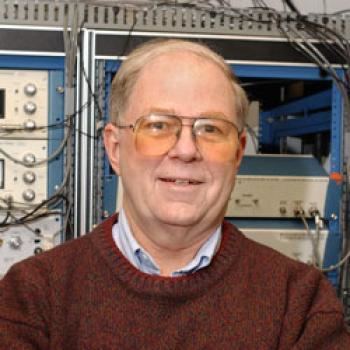Citizenship US Doctoral advisor James Olds Name Robert Wurtz | Notable awards See text Nationality US | |
 | ||
Born 28 March 1936 (age 89) Saint Louis, Missouri ( 1936-03-28 ) Institutions National Institute of Mental Health and National Eye Institute of National Institute of Health Thesis Self-Stimulation and Escape in Response to Stimulation of the Rat Amygdala (1962) Alma mater | ||
Robert wurtz p tage de plombs
Robert H. Wurtz is an American neuroscientist working as a NIH Distinguished Scientist and Chief of the Section on Visuomotor Integration at the National Eye Institute. He is a member of the US National Academy of Sciences and the American Academy of Arts and Sciences. He is recognised for developing methods for studying the visual system in 'awake-behaving' primates (as opposed to those under anesthesia), a technique now widely used for the study of higher brain functions. He pioneered the study of the neuronal basis of vision and its relation with cognitive functions.
Contents
- Robert wurtz p tage de plombs
- Entretien avec robert wurtz 1 3
- Early life and education
- Professional career
- Personal life
- Award and recognition
- References
Entretien avec robert wurtz 1 3
Early life and education
Robert Wurtz was born in Saint Louis, Missouri as an only child of Robert Wurtz. His father (the name Robert was inherited from his grandfather) was a factory worker, a superintendent at the Mavrakos Candy Company. His mother Alice also worked at the same company as a bookkeeper. He was very weak in spelling since childhood, as his high school English teacher reminded him, "Young man, if your livelihood depends on spelling, you will starve." When it was time for college, he wanted to join liberal arts college. Most of his school-mates opted for Swarthmore. However, his father persuaded him to apply for Oberlin College as it was the nearest reputable institution from home. In 1954 he joined Oberlin and graduated in 1958 with a major in chemistry. But the periodic table soon discouraged him to pursue chemistry further because of his poor memory. Then he found an interest in experimental psychology and physiology of nervous system. At Michigan University he initially failed in seven out ten areas in the proficiency test in psychology. He passed in physiological, sensory, and developmental. So he took up neurophysiology and neuroanatomy under James Olds. He submitted his PhD thesis in 1962, even though Olds was hesitant about the title Self-Stimulation and Escape in Response to Stimulation of the Rat Amygdala. He went on for a post-doctoral research in the Physiology Department of Washington University in St. Louis.
Professional career
In 1966 Wurtz joined the Laboratory of Neurobiology, National Institute of Mental Health, in Bethesda, Maryland. He began studies on the visual system of awake in monkeys and made groundbreaking works on neurobiology of vision and eye movements. During this time he spent a year (1975-1976) as a Visiting Scientist at the Physiological Laboratory at Cambridge University in England. He became the founding Chief of the Laboratory of Sensorimotor Research, National Eye Institute in 1978. In 2002, he stepped down as chief of the laboratory, but has remained as a senior investigator.
His 1969 publications became classic papers on this technique of studying the physiology of the visual system, and now used by cognitive neuroscientists around the world.
Personal life
Robert Wurtz married Sally Smith, a fellow student at Oberlin, c. 1955. They have a son William and a daughter Erica.
